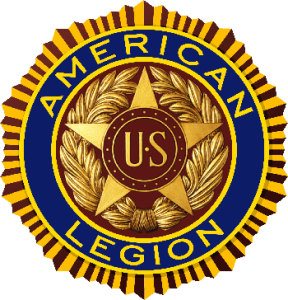 The American Legion was born at a caucus of the American Expeditionary Force (A.E.F) in Paris, France. This caucus was the result of a proposal by Lt. Col. Theodore Roosevelt Jr. to a group of representatives of A.E.F. divisions and service units. Roosevelt’s vision resulted in the founding Paris caucus of March 17-19, 1919, and subsequent organizational caucus held May 8-10, 1919, in St. Louis, MO. His unwavering service during these vital times won him the affectionate title, “Father of The American Legion.”
The American Legion was born at a caucus of the American Expeditionary Force (A.E.F) in Paris, France. This caucus was the result of a proposal by Lt. Col. Theodore Roosevelt Jr. to a group of representatives of A.E.F. divisions and service units. Roosevelt’s vision resulted in the founding Paris caucus of March 17-19, 1919, and subsequent organizational caucus held May 8-10, 1919, in St. Louis, MO. His unwavering service during these vital times won him the affectionate title, “Father of The American Legion.”
As the weary, homesick delegates assembled for that first Paris caucus, they brought with them the raw materials with which to build an association of veterans whose primary devotion was to God and Country. In the minds of those veterans of the A.E.F. were a number of lofty ideals, uppermost among them:
- Creation of a fraternity based upon the firm comradeship born of wartime service and dedicated to fair and equitable treatment for all veterans, particularly the disabled, and the widows and orphans whose loved ones paid the ultimate price for freedom;
- Maintaining national security for America, including a universal military training program for the prevention of future world conflicts; and
- Promotion of patriotism and the combating of materialistic and totalitarian ideologies that recognize neither the honor nor the integrity of the individual.
It was at this Paris caucus that The American Legion received its name. The honor of naming the new organization went to Maurice K. Gordon, then a Major in the 36th Division and later a Judge in Kentucky. A controversy had developed concerning the name, and it was Gordon who made the successful motioon to label the fledgling group “The American Legion.”
Even though The American Legion was formed overseas, organizers realized members of the armed services had no choice whether they served in the United States or overseas. Accordingly, it was decided that membership in The American Legion should be open to all who served honorably in the armed forces in World War I. (Eligibility requirements for membership have since been revised to open membership in the Legion to veterans who served honorably in the armed forces of the United States in WWII, The Korean War, the Vietnam War, Lebanon and Grenada, Panama, and the Persian Gulf.)
Taken from “The American Legion Extension Institute: History & Organization” booklet.






